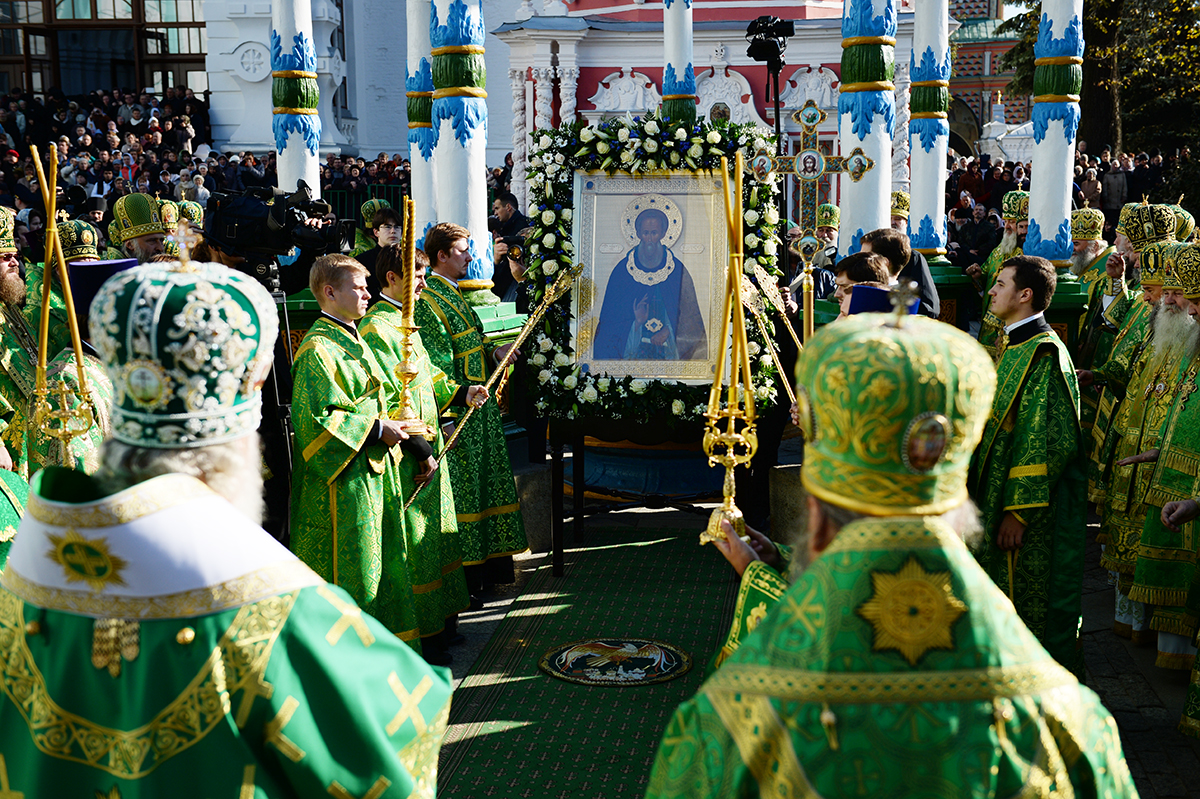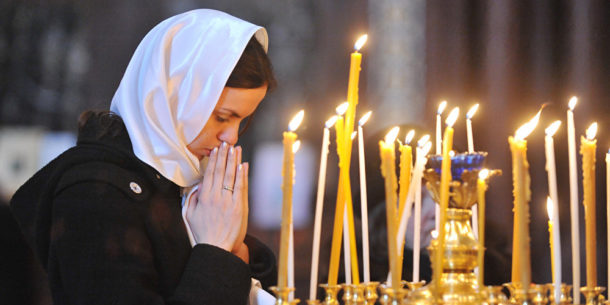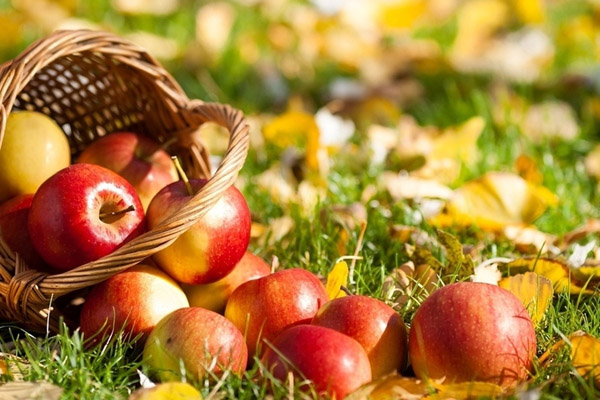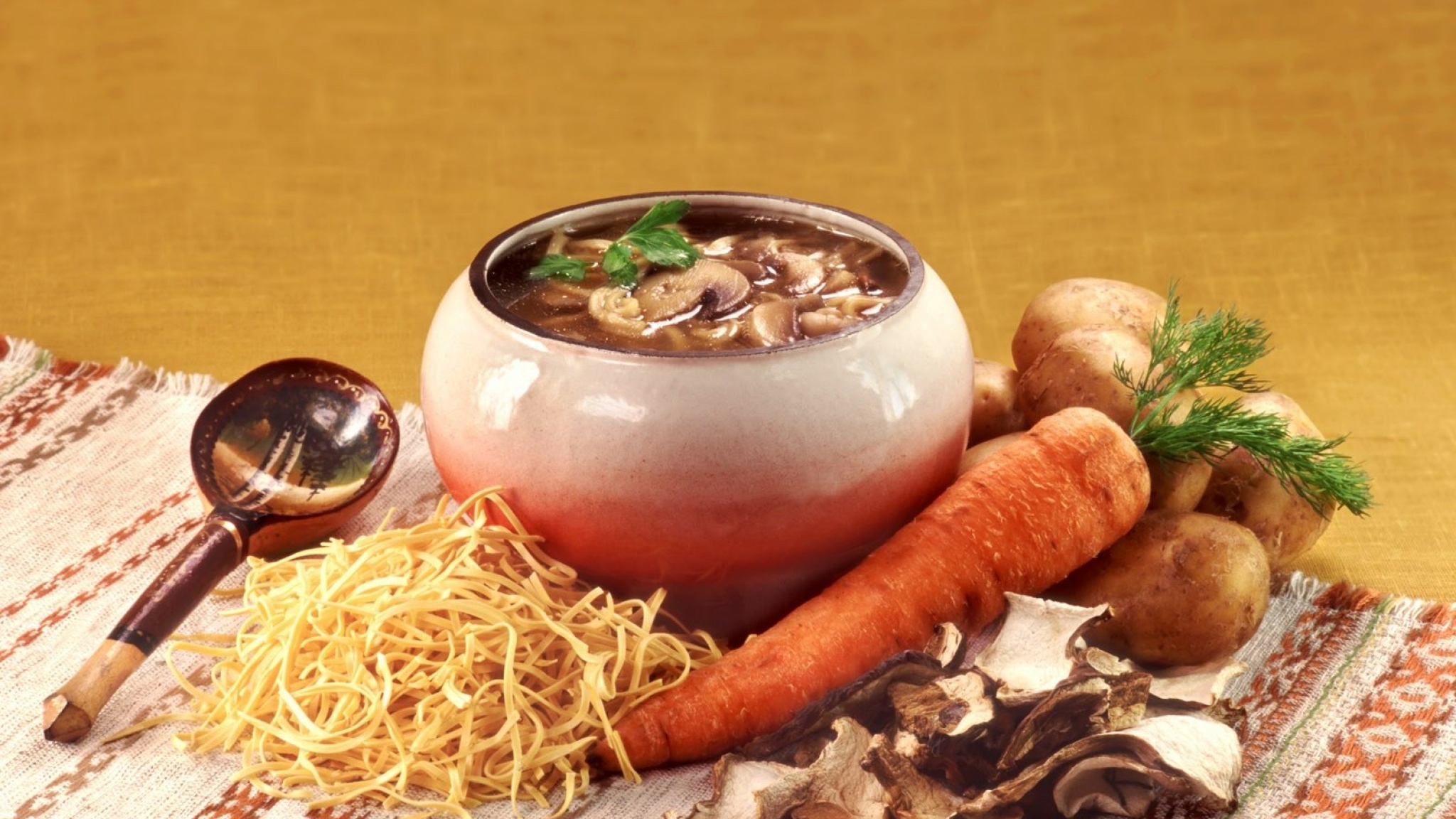What Orthodox holiday does the Church celebrate today, August 12? What is today a church holiday that is widely celebrated among the people and has a long history, rich traditions and signs? We will answer all these questions in this article.
What is the church holiday today: August 12 (July 30, old style), the Orthodox Church celebrates:
- Memorial Day of the Apostles from 70: Strength, Siluan, Kriskent, Epenet and Andronicus;
- Memorial Day of the Martyr John the Warrior;
- Memorial Day of St. Anatoly II of Optina, the Younger;
- Uncovering the relics of St. Herman of Solovetsky;
- Memorial Day of Hieromartyrs Polychronius, Bishop of Babylon, Parmenius, Elima and Chrysotel, presbyters, Luke and Muko, deacons, martyrs Avdon and Sennis, princes of Persia, and martyrs Olympius and Maximus;
- Memorial Day of the Hieromartyr Valentine (Ualentinus) of Interam (Italian), Bishop, and three disciples of his martyrs Proculus, Ephis and Apollonius and the righteous Avundius;
- Memory of the Cathedral of Samara Saints;
- Memorial Day of Hieromartyr John Plotnikov, Deacon;
- Okonskaya - the icon of the Mother of God.
 Whichchurch holiday today August 12, 2017:App. from 70 Strength, Siluan, Kriskent, Epenet and Andronicus(I) .
Whichchurch holiday today August 12, 2017:App. from 70 Strength, Siluan, Kriskent, Epenet and Andronicus(I) .
The Holy Apostles from 70: Sila, Silouan, Kriskent, Epenet and Andronicus are disciples of the Savior.
The apostle from the 70, Saint Silas, was a respected man in the original Jerusalem Church, “leading among the brethren” (Acts 15:22). After the Council of the Apostles, held in Jerusalem in the year 51, on the issue of the need for observance of the Mosaic Law by Gentile Christians, the Apostles sent a message to the Christians of Antioch through the Apostles Paul and Barnabas, in which they reported that by decision of the Council, Christians from Gentiles were exempted from observing the requirements of the Mosaic Law. It was decreed for them to refrain from eating things offered to idols, from fornication, from strangles and blood, and not to do to others what they do not wish for themselves (Acts 15:20-29). Together with the Apostles Paul and Barnabas, the Council sent members of the Jerusalem Church, Saints Silas and Judas, to Antioch to clarify the epistle verbally, which both of them fulfilled with the assistance of the grace of the Holy Spirit. Then Saint Jude was released to Jerusalem, while Saint Silas remained in Antioch and zealously helped the Apostle of Tongues in his missionary travels with the Gospel sermon. The apostles visited Syria, Cilicia, Macedonia.
In the city of Philippi they were accused of inciting the people, for which they seized the holy apostles, beat them with sticks, and then threw them into prison. At midnight, when the holy apostles Paul and Silas were praying, a strong earthquake suddenly occurred, the chains fell from them and the doors of the dungeon opened. The prison guard, frightened that the prisoners had fled, wanted to commit suicide, but was restrained by the Apostle Paul. Then, tremblingly falling at the feet of the apostles, he faithfully received the gospel of Christ from them, led them out of prison, brought them to his house, washed their wounds and was baptized with all his household.
From Philippi, the apostles Paul and Silas went to the cities of Amphipolis, Apollonia and Thessalonica, acquiring new disciples of Christ in each city and establishing the Churches.
In Corinth, the holy Apostle Silas was ordained a bishop, and there, having performed many signs and wonders, he ended his life.
The Holy Apostle Silouan preached the Word of God together with the chief apostles Peter and Paul. In the 1st Catholic Epistle, the holy Apostle Peter mentions him: “I wrote this briefly to you through Silouan, your faithful brother, as I think” (1 Peter 5:12). Saint Silouan was made bishop of Thessalonica and there he died a martyr, enduring many sorrows and misfortunes for the sake of the Lord.
The holy Apostle Criskent is mentioned by the holy Apostle Paul in the 2nd epistle to Timothy (2 Tim. 4:10), saying that Criskent went to Galatia with a sermon. There he was appointed bishop, and then preached the Word of God in Gaul. In the city of Vienna, the Apostle Crescentes appointed his disciple Zacharias as bishop. Returning to Galatia, he died as a martyr under the reign of Trajan (98-117).
The Holy Apostle Epenet was appointed Bishop of Carthage. In his epistle to the Romans (Rom. 16:5), the holy apostle Paul writes: "Greet my beloved Epenetus, who is the firstfruit of Achaia for Christ." In the same epistle, the Apostle Paul also recalls the Apostle Andronicus: “Greet Andronicus and Junia, my relatives and prisoners with me, who were glorified among the apostles and who believed in Christ before me” (Rom. 16:7). The Holy Apostle Andronicus was a bishop in Panonnia (Commemoration of Saints Andronicus and Junia, May 17).
 August 12, 2017, which Orthodox holiday is today church calendar:
Mch. John the Warrior(iv) .
August 12, 2017, which Orthodox holiday is today church calendar:
Mch. John the Warrior(iv) .
The Holy Martyr John the Warrior served in the imperial army of Julian the Apostate (361-363). Along with other soldiers, he was sent to persecute and kill Christians. Remaining outwardly as if he were a persecutor, Saint John in fact rendered great help to the persecuted Christians: he freed those who were captured, warned others of the danger threatening them, assisted in their escape. Saint John showed mercy not only to Christians, but also to all those in distress and in need of help: he visited the sick, comforted the mourners. When Julian the Apostate found out about the actions of the saint, he imprisoned him.
In 363, the persecutor was killed in the war with the Persians. Saint John was released and devoted his life to serving others, living in holiness and purity. He died at a ripe old age.
The year of his death is not exactly known, the place of burial of St. John the Warrior was gradually forgotten. He appeared to one pious woman and indicated the place of his repose. It became known in this district. His relics were laid in the church of the Apostle John the Theologian in Constantinople. The Lord gave the holy relics of John the Warrior the grace-filled power of healing. Through the prayers of St. John, the offended and grieving receive consolation.
In the Russian Church, John the Warrior is sacredly revered as a great helper in sorrows and situations.
 What is the holiday according to the church calendar today, August 12, 2017:Finding the relics of St. German Solovetsky (1484).
What is the holiday according to the church calendar today, August 12, 2017:Finding the relics of St. German Solovetsky (1484).
The uncovering of the relics of St. Herman of Solovetsky took place in 1484. St. Herman lived as a hermit on the river Vyga, near the chapel. Around 1429, the Monk Savvaty, a tonsurer of the Valaam monastery, found him here, looking for a secluded place for his exploits. Herman told Savvaty about the Solovetsky Island, and both monks, having crossed the sea, settled on Solovki. They built a cell for themselves under Sekirnaya Hill, in which they lived for six years. Upon the repose of Savvaty († September 27, 1435), the Monk Herman continued his ascetic exploits on the island with another hermit, the Monk Zosima (Comm. 17 April). Herman lived on the island for over fifty years.
Being illiterate, but admonished by God's Providence and wishing to preserve the memory of the deeds of the Monk Savvaty for the edification of many, he ordered the clergy to write down their memories of the Monk Savvaty and Zosima, about the events that occurred during their lifetime. The Monk Herman loved to listen to edifying readings and bequeathed to his disciples to collect books for the monastery. For the economic and other needs of the monastery, the monk, until a ripe old age, made dangerous voyages and long journeys to the mainland. On one of these trips to Novgorod in 1479, he died in the Anthony Monastery. His body was taken to the Solovetsky Monastery, but because of the mudslides, they were forced to bury him near the chapel in the village of Khavronina on the Svir River. In 1484, when it was decided to transfer the coffin to the site of the deeds of the monk, his relics were found incorrupt.
August 12, 2017: what church holiday is today - Okonskaya Icon of the Mother of God.
Icon of the Mother of God of Okon, according to legend, was received by the Georgian king Vakhtang IV from Jerusalem and was originally located in the Gaenat monastery in Georgia. The Georgian prince George Alexandrovich transferred the holy icon to the cathedral church of the village of Lyskov, Nizhny Novgorod diocese.
News today: (click to navigate news)
Read more about the holiday in the article:
Kalinnik

Kalina was considered by our ancestors to be a symbol of pure and immaculate beauty… (Photo: Africa Studio, Shutterstock)
Date according to the old style: July 29
The original name of the holiday, which is celebrated on this day, is associated with the name of one of the holy martyrs - Kallinikos of Cilicia, who lived in the 3rd-4th centuries. His preaching about Christ in the city of Ancyra provoked the wrath of the pagans. Kallinikos was seized and presented to the hegemon Sacerdon. He sentenced the saint to a terrible punishment: they shod him in iron boots with nails sticking out inside, and so they took him to the place of execution, where they burned him alive. However, the body of the martyr remained unharmed, and subsequently it was buried by Christians.
Since the name of the preacher is very similar to the name of a well-known berry in Rus', which also ripens by this time, Kalinnik has also become a viburnum holiday. Our ancestors considered this plant a symbol of pure and immaculate beauty, and the bitter taste of berries symbolized the bitter fate of a girl given in marriage without love.
Peasant women cooked jelly and compotes from viburnum, crushed it with honey, made marmalade, mixing it with applesauce. Kalinniks in Rus' were called pies with viburnum. This is how Vladimir Dal describes their preparation: “The hostess will wrap a pinch of viburnum in rye dough with a pie, straighten it, swaddle it with a dry cabbage leaf - and on a baking sheet, in the oven, on a free spirit, let it sweat and fry. And how it pulls bread, how it smells of delicacy - open the damper, take out ready-made kalinniks. The cabbage leaf will shake off - and here it is, a pie with kalinka, with a forest scent!.
Kalinniks were also called morning frosts, which had already happened at that time and had a detrimental effect on the bread left in the fields. In the northern provinces they prayed: “Bring me, Lord, with a haze, not with frost”. Morok, or fog, on this day foreshadowed a good harvest of barley and oats. "If it's foggy on Kalinnik - put in scythes about oats with barley", - the peasants noticed. But if ripe oats turn green again, it means that autumn will be rainy.
Name day on this day
Alexander, Alexei, Anatoly, Benjamin, Konstantin, Kuzma, Mikhail, Nikolai, Roman, Seraphim
Nativity of St. Nicholas the Wonderworker

Saint Nicholas the Wonderworker
On August 11, the Russian Orthodox Church celebrates Nativity of St. Nicholas the Wonderworker, Bishop of the World of Lycia. This is one of the most revered saints in Rus'.
It must be said that in addition to the two main holidays dedicated to St. Nicholas, celebrated (according to the new style) on December 19 (the blessed Assumption of the saint) and May 22 (the transfer of the holy relics to the city of Bar), there are other days of church celebration of the Saint Nicholas. But the holiday of his birth is not yet very widely known in Russia, since it was revived not so long ago - in 2004, with the blessing of the Patriarch of Moscow and All Rus' Alexy II, the celebration of the Nativity of St. Nicholas was resumed.
Nicholas the Wonderworker was born in 258 in the city of Patara, not far from Lycia, on the southern coast of the Asia Minor peninsula. His parents Theophan and Nonna were pious and righteous Christians, but for a long time they were childless, about which they grieved and constantly prayed to God to send them a child. The Lord heard them and sent them a son, and they vowed to dedicate their only child to the service of God.
From the day of his birth, the infant Nicholas showed people the light of his future glory as a great miracle worker. He performed the first miracle at his very birth, curing his mother from a serious illness. In addition, the newborn baby, still in the font during baptism, stood on his feet for three hours, supported by no one, thereby paying honor to the Most Holy Trinity.
Already from infancy, St. Nicholas began a fasting life, took mother's milk on Wednesdays and Fridays, only once, after evening prayers parents. Having become a little older, he succeeded in studying the Divine Scriptures, spent whole days in the temple, and at night he prayed and read books. Being constantly in labor and prayer, Nicholas showed great mercy to those around him, came to the aid of the afflicted and distributed all his possessions to the poor. He himself led a simple and very ascetic life and became famous as a great saint of God.
Even during his lifetime, Saint Nicholas performed many miracles - more than once he saved those drowning in the sea, led them out of captivity and imprisonment in dungeons, healed people from ailments and even resurrected them, fought for the truth and demanded that those in power restore justice, taught with his life love and compassion . He lived a worthy life and, having reached a ripe old age, died peacefully.
Therefore, it is not surprising that this saint was revered at all times and among many peoples. However, the exact time of the establishment of the celebration of the Nativity of St. Nicholas the Wonderworker is unknown. Most likely, this holiday was originally local in the Asia Minor Lycian Worlds, where the Saint served as an Archbishop, and in the homeland of his parents - in Patara. Then, at the time of the Crusades, this holiday could spread throughout the Nicaean Empire and from there penetrate into Rus', where this saint was revered from ancient times.
In addition, since the 9th century, Nicholas the Wonderworker was revered in Rus' as heavenly patron sovereign power - it was believed that he especially patronizes the Orthodox tsars. It is also known that in the 13th century the tradition of celebrating his Nativity in the Russian Orthodox Church already existed, and in Veliky Novgorod there was even a monastery dedicated to the Nativity of St. Nicholas. There is still evidence that one of the surviving church services dedicated to this holiday was composed at the time of Patriarchate Nikon in 1657. However, during the reign of Catherine the Great, the church-wide celebration of the Nativity of St. Nicholas the Wonderworker in Russia was abolished.
And now, several centuries later, the celebration was resumed, and in honor of the feast of the Nativity of St. Nicholas, a troparion and kontakion were composed, known since ancient times in liturgical life Russian Orthodox Church.
National Identity Day in Armenia (Navasard)

Ancestor of Armenians Hayk
Every year on August 11, an important holiday is celebrated in Armenia - National Identity Day (Navasard), established as a state in 2009 by the Parliament of Armenia. The ARF Dashnaktsutyun faction came forward with this legislative initiative, and MP Artsvik Minasyan presented the bill.
On August 11, according to ancient Armenian chronicles, in 2492 BC, Hayk, the progenitor of the Armenians, defeated Bel, opening the possibility for his descendants to exist and develop freely.
According to legend, Hayk Akhehnavor (Hayk the Archer), who went down in history as Hayk Nahapet (the patriarch-ancestor of the Armenian people, the founder of the Haykazuni royal dynasty), defeated the Assyrian troops in the battle tyrant Bel and laid the foundation for the future Armenian state.
In ancient times, festivities in honor of Navasard lasted several days. By the way, it was called Navasard New Year's celebration and the first month of the year according to the ancient Armenian calendar, which was used in the country before the adoption of Christianity.
In one of these public holidays people drank sweet drinks and light wines. On the day of Navasard, there were practically no drunk people, as an ancient Armenian proverb says: "The gods leave the most tares in the field of the drunkard." At these holidays, even the food was moderate.
Due to the different climatic conditions of Armenia in different regions, various dishes were served on the festive table. In these dishes, the first place was occupied by round wheat, which grew only in Armenia. The Armenians put bread baked from this wheat on the table, so that the pagan gods of the Armenians would make New Year fertile. Probably one of the ancient Armenian sayings - in Navasard you can't borrow bread- is the result of these traditions. And therefore, they always tried to put bread baked from wheat grown with their own hands on the holiday.
There is another old saying: “Without wine, the new year will come, without ngatzahika, it will be late”. In ancient times ngatzahik was the most famous condiment. This appetizing flower grew on the slopes of Masis (Ararat). It was collected and dried by Armenians living in the areas of Masyatsotn and Tzhakatka, and then distributed throughout Armenia. And in whatever region an Armenian lived, he always had a ngatzakhik on Navasard. This tradition (to use dried ngatsakhik in New Year's dishes) was a symbol of the national unity of Armenians. Ngatzakhik connected all Armenians with Masis - the heart of the Motherland.
Since 2008, a wider celebration of Navasard began, already at the state level. And so, in 2009, Parliament decided on official holiday- Day of National Identity, which is celebrated on the day of the glorious victory of Hayk, the progenitor of the Armenians.
At the end of the summer, according to the church calendar for 2017, there will be many Orthodox holidays. In particular, in four days - from August 14 - the Assumption Fast 2017 will begin. It received its name in honor of the Dormition of the Mother of God - Holy Mother of God.
August begins with a summer meat-eater, and ends with the beginning of an autumn meat-eater. In the middle of the month, a fast is appointed in honor of the upcoming feast of the Assumption of the Most Holy Theotokos. Christians honor the Savior for three days in August - three Savior - Honey, Apple, Walnut.
Believers are very sensitive to church holidays, posts, prohibitions. Every true believer of the Orthodox faith should strive to observe the bodily and spiritual fasts established by the Holy Orthodox Church. August is enough time for that.

The first Savior - August 14 - is called the Honey Savior. It was believed that after this day the bees no longer make honey. And the beekeepers were just beginning to collect honey. The honey of the new harvest was taken to the church for consecration and only after that it was tasted.

During the upcoming Orthodox Lent it is necessary to refuse meat and dairy products and eggs. Relaxation is allowed only for children, pregnant women and sick people.
On this day, according to Holy Scripture, to Jesus Christ, Peter, John and James praying on a mountain in Galilee, two Old Testament prophet proclaiming Jesus to be the Son of God. In honor of this holiday, the Dormition fast is relaxed. The second saved - Apple. By this time, apples in almost all regions of our country were ripe. The new crop must be consecrated in the church, after which it can be eaten.
Previously, until the second Savior - August 19 - it was not supposed to eat fruit. But on a holiday they were carried to the church for consecration, and only after that it was possible to eat the collected fruits. Therefore, the name of the holiday was "Apple Spas".

This day among true believers is revered with special reverence. According to legend, after the death of Jesus Christ, His Most Pure Mother became the Mother of all the disciples of Christ. She often prayed that Jesus Christ would soon take her to him. The Archangel Gabriel brought Her joyful news that in three days Her earthly life and the Lord will take her to Himself. At the hour of death, an extraordinary light lit up the room where the Mother of God lay - the Lord Jesus Christ Himself, whirled by Angels, appeared and received Her pure soul.

Dormition means falling asleep. After all Mother of God as if she had not died, but simply fell asleep. Her body was in the tomb for only three days. Three days later, the soul of the mother of Jesus Christ went to Heaven. Therefore, the holiday is called the Assumption of the Blessed Virgin.
It is also called canvas or walnut. This holiday was not particularly revered by our ancestors, therefore it did not gain the publicity that the first two Savior gained. From this date, an active trade in fabrics and canvases began. However, on this day the church celebrates a more honorable event - the transfer is not made by hands. image of the Savior from Edessa to Constantinople in 944.

Multi-day post in August 2017 - Assumption post. The beginning of abstinence begins on August 14 and lasts until August 27, 2017 -. Strict post that starts with a celebration Honey Savior and continues until happy holiday Dormition of the Most Holy Theotokos.
Food calendar in Assumption Post 2017 by the days of the week is as follows:
On Monday, Wednesday and Friday - raw food diet. These days food is cooked without oil. It is also allowed to eat raw vegetables and fruits, dry bread, nuts, dried fruits, honey. You can only drink water.
On Tuesday and Thursday, hot food without oil is allowed. These days you can cook vegetarian soups from vegetables, sorrel, nettles and mushrooms. From drinks, teas, compotes, coffee and decoctions are allowed.
On Saturdays and Sundays, it is allowed to eat hot dishes with vegetable oil. You can drink all of the above drinks, as well as wine.

Directly on the feast of the Lord's Transfiguration (August 19, 2017), it is allowed to eat fish.








